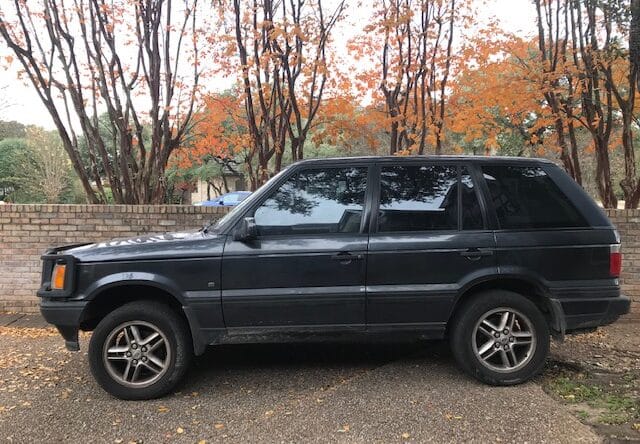Michelin’s “Safe When New, Safe When Worn” Tires: The Best Tires … Get Better With Wear?

If only that new car smell could last as long.
When I met my husband in 2004, he had owned his 2000 Range Rover for a couple of years. He bought it used, and I’m telling you he L-O-V-E-D that car. As in, maybe second only to me. He has a thing for the Land Rover brand, and this P38 model was his dream vehicle.
Fast forward 14 years, and my husband and I have been married now for 12 years and have an awesome 9-year-old son. And we still have that Range Rover and it still runs like a charm. He made friends with a Land Rover master mechanic who has a shop about 30 minutes from our house, and when it needs a new part, he takes it there and hangs out with the guys at the shop.
Tires, as you may know if you own a premium SUV, can be an expensive investment. It’s something for which most families have to plan and budget, and we’re no exception. And we want our little family to be riding on the safest tires we can get.
Michelin has been promoting their “Safe When New, Safe When Worn” Evergrip technology. The tires are designed to have features that actually evolve and emerge as they wear to prolong wet-weather performance, and they stop shorter on wet roads, a major safety consideration.
The truth about worn tires and what you need to know.

Tires That Get Better With Age, Like a Fine Wine
We put them to the test: we replaced the air suspension in our now 18-year-old Range Rover with coilover springs, which are easier to maintain. What that means is that the ride is a little less cushy, but we can improve the quality of the ride with the right tire. That’s where these Michelins come in. The tires make a big difference with our large and heavy vehicle Range Rover, but it also matters for any vehicle on the road.
I’m a big fan of things that get better with age – wine, cheese, and people, particularly – and having tires that age well seems impossible, but it’s a true statement here. Currently, the industry standard is to test wet-braking performance of new tires; however, wet-braking can change drastically as tires wear over time. That means we as consumers make purchase decisions based on a specific factor that becomes less relevant the more miles the put on the tires.
Michelin conducted internal tests to compare braking distances among specific tires in new and worn conditions to reveal how safety performance changes over time, and they say the test results are dramatic. On their site, they cite a 78-foot difference in stopping distance, which is more than five car lengths, between the best and worst tire in the test.
I checked out the reviews on their site, and one customer said, “I bought these tires six months ago for my 2008 CTS Cadillac. They handle in the rain like the roads are dry. The best tires ever purchased.”
That’s a powerful testimony.

How Does Ever Grip Work?
These new Michelin tires feature a new proprietary rubber compound that includes large amounts of sunflower oil and silica. The sunflower oil enhances the grip of the tire, and the silica helps you stop quickly. See, tires lose their grip on the road is because the grooves wear down. Michelin’s tread design expands those grooves as the tires are worn in, and an extra set of grooves are built into the tire that you can’t see, like a set of shark teeth. When the tire is new, you can’t see them; the 150 new grooves emerge as your tires wear to give your tire more life and extra grip.
It also helps that all Michelin tires have a standard manufacturer’s Limited Warranty, which covers defects in workmanship and materials for the life of the original usable tread, or for six years from date of purchase (whichever occurs first).
The future of tires means never having to buy new ones

The Verdict: Yes, They Age Well!
After six months of testing on various surfaces in a myriad of weather conditions, I can tell you that my husband is happy that his “baby” is cushioned with these tires that are as good now as they were when we put them on. Better, in fact, because they’re wearing in like the perfect pair of shoes. One could say that are aging as well as our relationship. ?
Off road, on road, rain, sleet, snow, and on beautiful sunny days, your tires are what hold the line on safety.

Disclosure: Michelin sent me a set of tires for this story, and we have been driving on them for six months to test them out. All opinions are my own.
